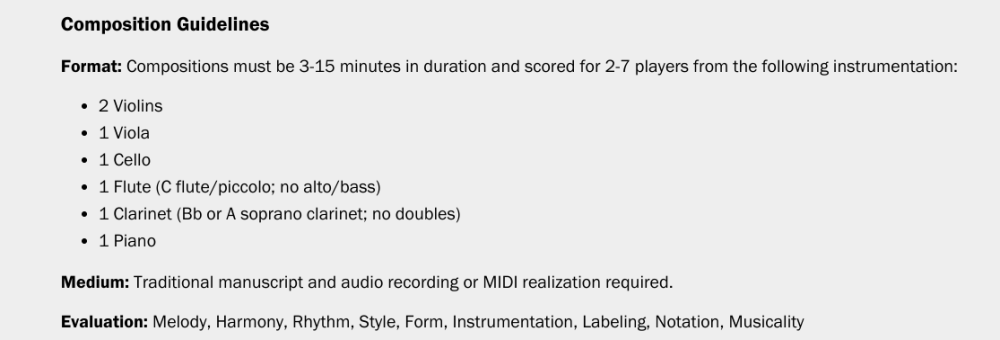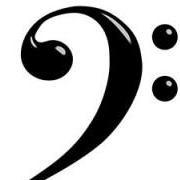Search the Community
Showing results for tags 'viola'.
-
This is my "Soliloquy for Viola No. 8, subtitled "Threnody for the Victims of the Israeli Genocides of Gaza (7/10/2023-) and Lebanon (23/9/2024-)". As many of you know, the soliloquy is one of my favourite forms. For me a soliloquy is a short, reflective, often calm and sometimes sad composition. At the time of its composition this was my 181st soliloquy. It is unique in being a "Threnody for the Victims of the Israeli Genocides of Gaza (7/10/2023-) and Lebanon (23/9/2024-)", genocides that have continued (albeit at a lower intensity) despite "ceasefires" (if you can call the cessation of genocide a "ceasefire) in effect from November 27, 2024 (for Lebanon) and from January 15, 2025 (for Gaza), genocides mercilessly targeting and killing thousands of men, women, and children, whole families, health workers, and journalists (the latest figures of the number of victims estimate more than 6,000 for Lebanon and 48,453 for Gaza*), and destroying thousands of buildings, churches, mosques, schools, universities, and hospitals. As a Lebanese experiencing one of these genocides, this piece constitutes my musical sorrow and outrage at the injustice and suffering its victims experienced and continue to experience. *These figures are from the time of this writing, on March 9, 2025. For sources, see the following: https://x.com/ObserveLebanon/status/1896041783877914893 https://sharjah24.ae/en/Articles/2025/03/09/ZX66 Here's the link to my previous soliloquy for viola: https://www.youngcomposers.com/t36334/soliloquy-for-viola-no-7/
-
Hey guys! I'm getting ready to start on my longest piece to date: a 10-minute chamber concerto featuring the oboe as the soloist. Instrumentation (subject to change): Woodwinds - Oboe, Flute, Bb Clarinet, Basson, Bass Clarinet Strings - 4 Violins, 2 Violas, 2 cellos, 2 DB Brass: French Horn, 2 Trumpets I am not sure where to start, so I was hoping to see if anyone had any resources they could recommend, such as words of advice, structural advice, instrumentation, etc. Thank you
-
Thank you to everyone who gave me feedback - this is the final piece! Program Notes: "Beauty for Ashes" draws inspiration from Isaiah 61:3: "To appoint unto them that mourn in Zion, to give unto them beauty for ashes, the oil of joy for mourning, the garment of praise for the spirit of heaviness; that they might be called trees of righteousness, the planting of the Lord, that He might be glorified." This piece reflects the contrast between sadness and joy, crafted through Louis's signature blend of traditional and modern harmony; inspired by jazz harmony and film scores. The main motif, a 5-measure phrase, ascends with leaps and scalar motion, symbolizing the climb towards joy and redemption. Secondary material navigates unexpected harmonic terrain, briefly shifting to evoke turmoil before returning to the main theme, restored and renewed. Louis uses modern harmony, secondary dominants, and modal mixture, creating a nuanced emotional landscape in which sorrow's depth and hope's radiance intertwine. The piece culminates in a triumphant, cinematic chorale finale, symbolizing hope and victory. Sweeping dynamics converge with moving harmony lines, resolving to a radiant major 7th chord, evoking flourishing "trees of righteousness" – roots deepened by sorrow, branches stretching toward light. Duration: 5:22 Instrumentation: 1 Flute, 1 Bb Clarinet, 2 Violins,1 Viola, 1 Cello
-
This is my rough final draft of a piece I've been working on for a string quartet with clarinet and violin. My main thing right now is getting everything connected and refining my harmony. I wrote some sections that are just there and have no relation to the piece. I am also trying to follow my modern-classical-lush sound in the harmony, but I haven't perfected it. If you could please look it over, maybe mark it up, give some harmony/chord progression suggestions, and anything else, I would greatly appreciate it. Some "rules" I've learned for getting that sound - every chord gets a 7th (at least) - trying to always use the full chord - Use functional tonal harmony, and color special moments with chromaticism (iii7 a lot, modeal mixture, and secondary dominants)
-
Hello all - I am trying to write a composition that follows these guidelines. I have a basic motif already, and I was wondering if anyone had any suggestions on how to proceed. I've never written for this exact ensemble before (2 violins, 1 viola, flute, and clarinet) and I'm aiming for a 3.5-4 minute piece. Are there any formulas that might help, or anything orchestration-related that you might suggest?
-
Today I submit a recent work I premiered recently in a concert. This is a caprice with some influence from my origins in Ukraine but maybe not so obvious or exagerated but still in a simple way. It was composed in a short period of time the same day of the concert so this is primarily the reason of the simplicity and repetition. (I also attach a violin version of the score if you like it) Hope you like it! CapriccioViola.mp3 CapriccioViola.pdf
-
Hi to everyone, since finally I have vacations I decided to try to compose a tango. I called it "primer tango?" Which could be translated as "First tango?" because it has some things that get out of the genre, so you can say that this is a personal interpretation. Also it's the first time that I writte for bandoneon so the left hand is pretty empty. So what do you think? it sound like tango?. The structure is simple. Introduction: A A' with repetition: B: bridge: Introduction: A A'. Also, I tried to make a sheet music video with a animated background intead of just the sheet music so it is also a experiment in that, I also attach PDF and mp3 if it is easier to read that way.
-
- 3 replies
-
- 1
-

-
- violin
- string quartet
-
(and 4 more)
Tagged with:
-
I have written a quartet for strings on which I would like the honour of some of your criticisms. This work has sprouted from almost a year and a half of counterpoint study. It is similar to a fugue; that is, it does tend to have fugal aspects; however on the whole, this is mostly a work of counterpoint with many interesting hidden ideas embedded within it. I can understand if you are unable to listen to the entire work, as it is almost 16 minutes long; however, if you give me some feedback on even a single contrapuntal passage, I would be greatly indebted to you. Thank you for your time and I dearly hope you enjoy this work. On a side note, this recording that I have here does not take into consideration single note dynamics which is indeed frustrating; however, it is the only soundfont I could find that effectively does some of the counterpoint justice (that is, so it is not too muddy sounding).
-
Hi guys! This is a duo I made some years ago when I lacked some of the knowledge I’ve gained lately. For example there’s no modulation in key, too little variation and maybe some flaws in terms of voice leading rules. Is this piece worth recording live or is it too boring? Will it be a messy viola key to read and play in? What can be done better in the latter half of the piece? Take care
-
Hello guys. Haven't been active in this forum for a long time. So this is my second draft of my first string quartet. So you're advices/critiques will help in my venture in writing the next parts of the piece (yes some parts are not good).Hope you like it. https://flat.io/score/5e6f38d9b35b8f06521c6575-string-quartet-no-1-in-e-minor-2020
- 2 replies
-
- chamber work
- violin
-
(and 6 more)
Tagged with:
-
This is a piece I wrote recently about a nervous auditioner (I think that’s the right word) in an audition for area or district band. It is supposed to be more on the theatrical side with some instruments representing people. There are four movements, each representing a part of the audition process. I will explain each one in depth:
-
This is a piece I wrote last week. I have separated the ‘movements’ by one measure long rests, and I understand if that may seem a bit too long; I have made them shorter in my more recent pieces. The reason I named it “Try, Try Again” was because the second and fourth movements reminded me of someone making a mistake whereas the other movements sounded like someone achieving or succeeding. I also included a quote on the last page of the score that I felt went along with the title of the piece.
-
Hi everyone! This is my first attempt at a string quartet. It is the first movement of a larger string quartet that I intend to make in D Minor. It would be nice if you could review it and leave some feedback. Thank you! (really sorry I only have the midi mockup, haven't got it performed yet) link: https://youtu.be/yVSecRZSyCg
-
I recently finished this composition and am looking for more advice. Considering this is my third piece where I’ve written for Strings, i think I’m getting better with writing for them. I can’t think of a name for it though so please recommend any possible names or ideas for names!
- 4 replies
-
- composition
- flute
-
(and 5 more)
Tagged with:
-
I started composing this almost 6 months ago, but I didn't finished ,until now because I run "Dry" of ideas. I used an harmonic ostinato by circle of fifths that repeats during all the piece. I haven't decided the dynamics very well, and don't sure where to add some more slurs. First time composing for string quintet, and for strings in general, hope there are no parts impossible to play. I add 2 audios, one with strings sounds and other with just piano, because some details are hardly noticeable because of the sound I used and my poor mixing. Any feedback is apreciated :3
- 10 replies
-
- harmonic ostinato
- g minor
-
(and 4 more)
Tagged with:
-
This is one of my all time favorite pieces by Gubaidulina. I tend to think of this piece as a good example of how unique and eclectic the composer's voice is in our own time. Gubaidulina takes traditional ideas of the concerto and adapts them to the more modern ideals relevant in our own day. An amazing work. I hope everyone enjoys it as much as I have.
-
There's so much to be said -with sometimes not enough time to say it. The same is true of music. So many ideas, and yet... we're left with so much longing after each piece. This is the idea behind this work. The ideas are pretty basic. There's some dabbling in serialism, free atonalism, combining tonal systems with serial rows, and a little more. NOTE: The scores aren't that well done. I'm using Flat (a free notation software) since I can't install Finale or Sibelius to my chrome book -and I am moving the pieces from paper to there. I'll be updating the scores once my new laptop arrives and I can get Sib installed again. Until then, I've done my best in adapting to Flat. It's not a bad notation software (though the midi sucks). My apologies! Hope you enjoy!
- 5 replies
-
- modern
- violoncello
-
(and 4 more)
Tagged with:
-
This is my "Five Sententiae for Viola Op. 324". It is my entry for the YC Fall 2019, "Poor Form" competition. As I have explained in the title page of the score, at least the 5th movement is much longer than the usual length of my sententiae due to the requirement of combining the previous 4 movements' styles/developments/processes.
-
I was wondering if anyone can recommend some songs with violin/viola solos along with an orchestra?
-
Hi everyone, I've been composing music for 3,5 years, but it was not until recently I decided to start uploading my music to the internet. I've never received any musical education, I had to educate myself. The first piece I decided to upload is the "Sonata for Viola and Orchestra". Please note, that even though it says sonata in the title, I wasn't sticking to any particular composition form. I would appreciate any feedback you can give me on both my orchestration and composition and your thoughts in general. For the story behind the piece, you can check the description of the video attached here. My idea behind this composition was as follows: The motif that represents life gets introduced in the first part of the composition in a major key (0:00-0:56). Then the piece switches to a minor key and a "loss" motif start playing by a solo viola, representing the losses during the war. After the second repetition of the motif (1:00-2:24), the life motif comes back now in a minor key representing that life has changed for the worse (2:24-3:15). The loss motif is then repeated again and the piece concludes on an unstable minor add9 chord to show the uncertainty of the situation (3:15-4:30). The piece: https://www.youtube.com/watch?v=S4jGyzvWlmY&lc=z221wrhqgxznjvopt04t1aokgbir4xpajzdb5agsljhlrk0h00410 The score is attached here Edit: Uploaded the piece here as well. For the history behind it, you should still check the link Edit 2: Replaced the previous pdf file with the new one, since I found some mistakes (had incorrect crescendo markings around bars 10-11)
-
Hi all! I'm new here, and I really wish I'd discovered this community much sooner! I love classical music but, as a violist, my largest complaint has been the lack of stirring, cinematic viola concerti. Well, what's a composer to do? So here's my stab at a full-length viola concerto. I've named it Yfirsést (pronounced ih-ver-syest), the Icelandic word for "overlooked," and an all-too common feeling among violists. This is the first movement, and it resounds with the struggle of overcoming mediocrity and being seen for what you are. (I couldn't tell you what composer it sounds like, because to me, it sounds like me. 🙂) I appreciate your feedback, and especially taking the time to listen! I'll upload the second and third movements (along with the scores for all 3) later.
-
Hey gang, I posted this piece earlier when I was in the middle of writing it. Here is the finished product. This is the piece I composed over the spring semester during my first semester of composition lessons at the university I am attending. Please enjoy and let me know what you think! (P.S. Evidently when you use Petrucci font in Finale, the tremolo stops working, so that's why it appears in the score, but is not in the MP3 [do the midi problems ever end...?])
- 1 reply
-
- string quartet
- strings
-
(and 7 more)
Tagged with:













